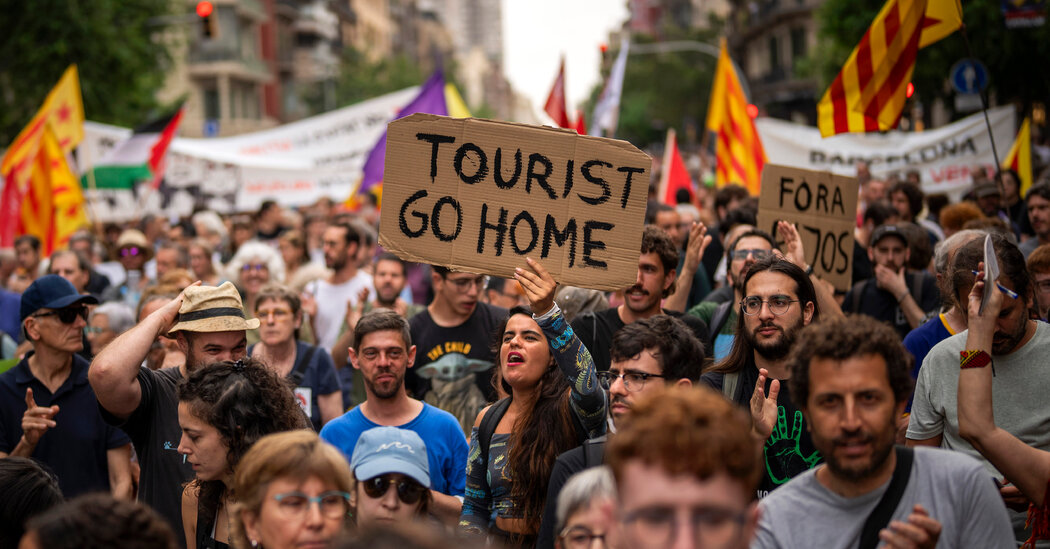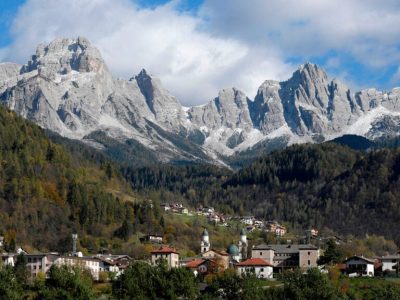On a steamy August evening, a stream of young people bearing boxes of pizza and bottles of cheap cava began the uphill slog to Carmel Bunkers in Barcelona. Set on a hill overlooking the Catalan capital, the concrete structures once housed antiaircraft weapons that protected the city during Spain’s civil war in the 1930s. Later the site became a destination for residents on evening strolls and a hangout for local youths.
But that was before Instagram and TikTok.
Several years ago, inspired by social media, young tourists began making the Bunkers a favorite spot for drinking, carousing and the inevitable sunset selfie. Last spring the noise, litter and sheer number of visitors spurred the city to erect fences around the site.
Now, hundreds of visitors find any space they can amid the surrounding scrub and rocks. Or they simply jump the barriers.
“I used to play there as a girl,” said Manoli Fernández, 57, a longtime resident out strolling with her daughter and 87-year-old mother. “Now there are drunk tourists peeing on our neighbor’s doorstep.”
For anyone hoping to understand the complicated contours of overtourism in Barcelona, the Carmel Bunkers is a good place to start. The frustrations experienced by those who live nearby apply to other hot spots: residents of the Gothic Quarter who feel displaced by the crowds; pollution along the waterfront where massive cruise ships dock; and everywhere, it seems, an apparent disregard for local culture.










